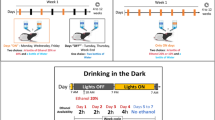Abstract.
Rationale: Several halogenated analogs of benztropine (BZT) have previously been characterized as potent DA uptake inhibitors with behavioral profiles that indicate diminished psychomotor stimulant effects relative to cocaine. In a previous study using a fixed-ratio 10 schedule, two chloro-analogs (3′-C1-BZT and 4′-Cl-BZT) maintained IV self-administration in monkeys but appeared to be weak positive reinforcers. Objectives: The present experiments were designed to test the hypothesis that 3′-C1-BZT and 4′-Cl-BZT are relatively weak reinforcers by evaluating reinforcing effects under increased response requirements. To examine further the effect of this halogen substitution on self-administration, 3′,4′′-diCl-BZT was also evaluated for reinforcing effects. Methods: Four rhesus monkeys self-administered cocaine (0.03 mg/kg per injection, IV) under a fixed-ratio 25 (FR25) schedule until stable responding was established. Saline, various doses of cocaine (0.003–0.2 mg/kg per injection), the BZT analogs (0.012–0.2 mg/kg per injection), GBR 12909 (0.012–0.2 mg/kg per injection), and compounds with known reinforcing effects (d-amphetamine, morphine, pentobarbital, ketamine) were then made available for self-administration. Various doses (0.01–0.3 mg/kg per injection) of the compounds that maintained self-administration under the FR schedule were then substituted for cocaine (0.1 mg/kg per injection) under progressive-ratio (PR) schedules. Results: Reinforcing effects were evident under the FR schedule for 3′-C1-BZT, 4′-Cl-BZT, GBR 12909, and the control compounds, but not by 3′,4′′-diCl-BZT. Results with the PR suggested that the rank order of these compounds for their effectiveness as reinforcers was cocaine>GBR 12909>3′-C1-BZT=4′-Cl-BZT>>3′,4′′-diCl-BZT. Conclusions: This study confirms and extends previous results suggesting that compounds with high DAT affinity can have strong, moderate, weak, or no effectiveness as reinforcers. The mechanisms that may underlie this variation in reinforcing effectiveness of these DAT ligands remain to be established.
Similar content being viewed by others
Author information
Authors and Affiliations
Additional information
Electronic Publication
Rights and permissions
About this article
Cite this article
Woolverton, W., Hecht, G., Agoston, G. et al. Further studies of the reinforcing effects of benztropine analogs in rhesus monkeys. Psychopharmacology 154, 375–382 (2001). https://doi.org/10.1007/s002130000616
Received:
Accepted:
Issue Date:
DOI: https://doi.org/10.1007/s002130000616




